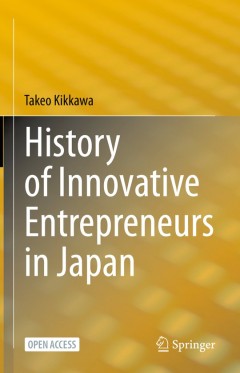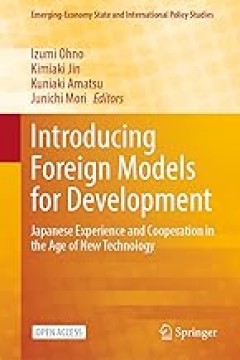Filter by

Founding Territorial Cults in Early Japan
The first book that deals with the territorial cults of early Japan by focusing on how such cults were founded in ownerless regions. Numerous ancient Japanese myths and legends are discussed to show that the typical founding ritual was a two-phase ritual that turned the territory into a horizontal microcosm, complete with its own ‘terrestrial heaven’ inhabited by local deities. Reversing M…
- Edition
- -
- ISBN/ISSN
- 978-90-04-68645-8
- Collation
- oer.unej.ac.id
- Series Title
- Brill's Japanese Studies Library, Volume: 76
- Call Number
- -

Following the Cap-Figure in Majapahit Temple Reliefs
Following male figures wearing a cap (cap-figures) in temple reliefs of the Javanese Majapahit period (ca. 1300-1500) leads to astonishing results on their meaning and function. The cap-figures, representing commoners, servants, warriors, noblemen, and most significantly Prince Panji, the hero from the East Javanese Panji stories, are unique to depictions of non-Indic narratives. The cap-figure…
- Edition
- -
- ISBN/ISSN
- 978-90-04-25865-5
- Collation
- oer.unej.ac.id
- Series Title
- Verhandelingen van het Koninklijk Instituut voor Taal-, Land- en Volkenkunde, Volume: 280
- Call Number
- -

Endangered Compound Prosody in Kansai Japanese
This book examines the diverse prosody of compound nouns in Kansai Japanese, with a special focus on a class of compounds with particularly variable prosody, whose unique prosody is potentially endangered due to their structure and influence from Tokyo Japanese. These compounds serve as important evidence for recursion in prosodic structure in theories of the syntax-prosody interface, as they s…
- Edition
- -
- ISBN/ISSN
- 978-90-04-67764-7
- Collation
- oer.unej.ac.id
- Series Title
- Endangered and Lesser-Studied Languages and Dialects, Volume: 2
- Call Number
- -

The Formation of Japan-ROK Security Relations = Meeting the Evolving Cold War…
This open access book argues that Japan-ROK security relations were formed in the process of adjusting the threat perception gap and policy conflict between the two countries. Conventional analyses using a “cooperation or conflict” dichotomy are too limited to capture the complex coordination of interests that security relations entail. In comparison, this book focuses on how, as they inter…
- Edition
- 1
- ISBN/ISSN
- 9789819784790
- Collation
- XI, 216 hlm; ill., lamp.,
- Series Title
- -
- Call Number
- -

Japan’s Arduous Rejuvenation as a Global Power = Democratic Resilience and …
This open access book assesses the profound impact of Japan’s aspirations to become a great power on Japanese security, democracy and foreign relations. Rather than viewing the process of normalization and rejuvenation as two decades of remilitarization in face of rapidly changing strategic environment and domestic political circumstances, this volume contextualizes Japan’s contemporary in…
- Edition
- 1
- ISBN/ISSN
- 9789811361906
- Collation
- XIII, 242 ill; lamp
- Series Title
- -
- Call Number
- -

Modern Japan’s Place in World History
This Open Access book includes chapters on the key turning points in modern Japanese history from the Meiji Restoration to Japan-China diplomatic normalization in the 1970s and beyond. The topics covered include the First Sino-Japanese War, the Russo-Japanese War, the First and Second World Wars, the Manchurian Crisis, the US Occupation, postwar Japan-China relations, and postwar decolonization…
- Edition
- 1
- ISBN/ISSN
- 978-981-19-9592-7
- Collation
- XVIII, 211
- Series Title
- -
- Call Number
- -

History of Innovative Entrepreneurs in Japan
This is the first Open Access book introducing more than 20 of Japan’s leading innovative entrepreneurs from the 17th century to the present. The author outlines the innovative business models created by entrepreneurs including SoftBank’s Masayoshi Son, Fast Retailing (Uniqlo)’s Yanai Tadashi, Honda’s Soichiro Honda, Sony’s Akio Morita, Panasonic’s Konosuke Matsushita, and Toyota’…
- Edition
- 1
- ISBN/ISSN
- 978-981-19-9454-8
- Collation
- XIII, 291
- Series Title
- -
- Call Number
- -

Political Reform Reconsidered
This Open Access book provides a comprehensive analysis of political reforms in Japan since the 1990s, emphasizing the role of ideas in shaping their goals and outcomes. For more than fifteen years following the collapse of Japan’s economic bubble, politicians, business people and academics tackled a range of institutional reforms. The sweeping changes they enacted—covering almost…
- Edition
- 1
- ISBN/ISSN
- 978-981-19-9432-6
- Collation
- XVIII, 215
- Series Title
- -
- Call Number
- -

A Woman Alone in The Heart of Japan
Experience the captivating culture of Japan through the eyes of pioneering American author Gertrude Adams Fisher, who lived alone in rural Japanese villages for over a year in the 1920s. Her vivid descriptions of local customs, food, and landscapes make this an important resource for anyone interested in Japanese history and culture.
- Edition
- -
- ISBN/ISSN
- -
- Collation
- x, 293 p., [33] leaves of plates : 20 cm,Includes index
- Series Title
- -
- Call Number
- -

Introducing Foreign Models for Development
This open access book studies how foreign models of economic development can be effectively learned by and applied to today’s latecomer countries. Policy capacity and societal learning are increasingly stressed as pre-conditions for successful catch-up. However, how such learning should be initiated by individual societies with different features needs to be explained. The book answers this p…
- Edition
- -
- ISBN/ISSN
- 978-981-99-4237-4
- Collation
- XXVI, 338
- Series Title
- -
- Call Number
- -
 Computer Science, Information & General Works
Computer Science, Information & General Works  Philosophy & Psychology
Philosophy & Psychology  Religion
Religion  Social Sciences
Social Sciences  Language
Language  Pure Science
Pure Science  Applied Sciences
Applied Sciences  Art & Recreation
Art & Recreation  Literature
Literature  History & Geography
History & Geography